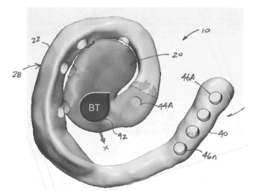Ear Splint
TECHNOLOGY NUMBER: 7199

OVERVIEW
An ear splint that models external ear cartilage in newborns with malformations- Lower profile, increased comfort, and less expensive than existing devices
- Additional applications for ear sealing, hearing protection, or hearing aids
BACKGROUND
Factors which can cause children to be born with ear malformations include genetics, viral infections, lack of blood supply or exposure to toxins during pregnancy. While some deformities may be minor in their extent, some ear malformations cause significant cosmetic deformities and may create diminished hearing acuity. The types of malformations include microtia (underdeveloped ear), anotia (a missing ear), Stahl’s ear (causing a pointed shape), or prominence (overly large or protruding ear). The two most common existing methods to deal with ear malformations are ear molding in newborns or surgery, which is usually delayed until 8-10 years of age. Given that only 30% of ear deformities are self-correcting and that delays in treatment can cause psychosocial or developmental harm, ear molding is the preferred pathway for treatment. However, ear molding is limited to outer ear deformities where the ear is misshapen, but not missing. As such, a need exists for improved methods for remodeling newborn ears where existing methods are insufficient.
INNOVATION
Researchers have created an ear splint to help model external ear cartilage during the first few weeks of life in infants born with malformations. Each splint may be created by three dimensional (3D) printing to permit an exact fit for each individual patient. Compared to existing devices, the ear splint has a lower profile, is comfortable, and costs far less to produce. The design and production of each splint is rapid, and its attachment avoids adhesives that can cause complications and skin breakdown. This central portion of the splint has a central portion which dwells within the anterior scaphoid section of an ear as well as a wing portion positioned along the postauricular area of the ear. A magnetic device resides in the central portion while a second magnetic device is located in the wing portion, thereby exerting a magnetic attractive force between the two. The ear splint can also be used as a postoperative dressing for ear surgeries where its secure fit may minimize the risk of post-surgical hematoma formation. Further potential uses for the device include situations where sealing or hearing protection are desired, including during swimming, using firearms, or aviation applications.